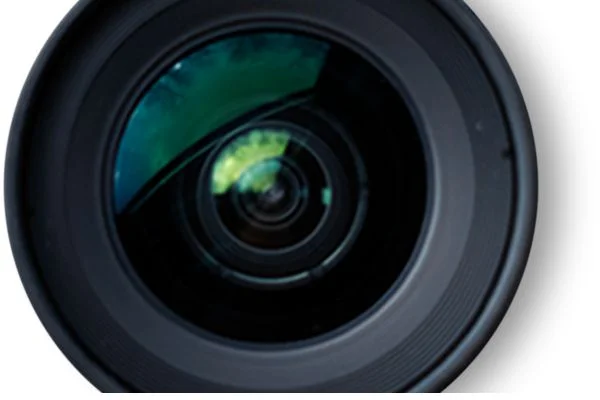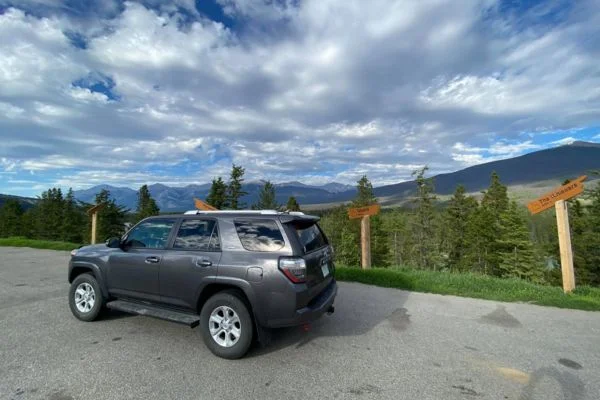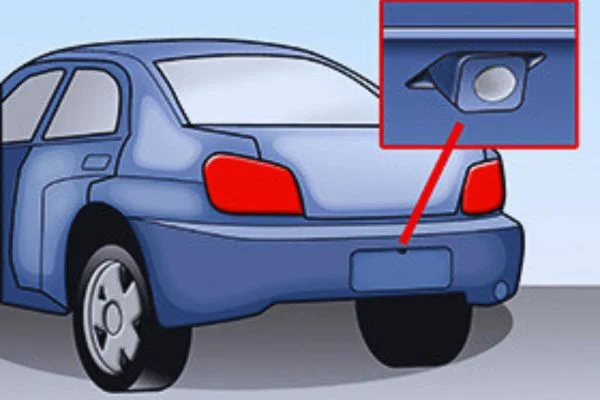If you were asking how to clean backup camera lens? Well, use a soft microfiber cloth with clean water or a mild dish soap solution to clean a backup camera lens. Gently wipe the lens to remove dirt and fog. Avoid using harsh chemicals or abrasive cleaners. Ensure the lens is completely dry before using the camera again.
Why is My Backup Camera Cloudy?

A cloudy backup camera can be attributed to various factors, such as dirt, dust, or moisture accumulation on the camera lens. Poor camera quality or a damaged lens may also lead to decreased image clarity. Regularly cleaning the lens and ensuring proper camera maintenance can help improve its clarity and functionality.
Read more about Do Camera Lens Protectors Affect Quality?
What Chemical Can Be Used to Clean Up Back-Up Camera Lens?
A mild dish soap solution can clean up a backup camera lens effectively. Mix a small amount of dish soap with water, dampen a soft microfiber cloth with the solution, and gently clean the lens. Avoid harsh cleaners, as they can damage the lens. After cleaning, ensure the lens is completely dry before using the camera again.
Can You Use Alcohol to Clean the Camera Lens?
Yes! You can use alcohol to clean a lens. It helps to remove dirt and smudges. But remember to use it sparingly on a microfiber cloth. Avoid spraying alcohol directly on the lens. Gently wipe the lens in circular motions, and let it dry completely before using your camera again.
Read more about How to Prevent Camera Lens from Fogging at Night?
How to Clean Foggy Backup Camera Lens?
A foggy backup camera lens can make it difficult to see what’s behind your vehicle, posing a safety risk. This guide will take you through the simple and easy steps to clean your backup camera lens effectively. You should learn how to clean backup camera lens. Regular cleaning will ensure clear visibility and enhance driving safety.
Gather the Necessary Supplies:
Before you begin, gather the following supplies:
- Soft microfiber cloth
- Clean water
- Mild dish soap or lens cleaning solution
- Cotton swabs (Q-tips)
- Compressed air can (optional)
- Small screwdriver (if necessary for removing the lens cover)
Park the Car in a Safe Area:

Engage the parking brake and turn off the main engine before proceeding with the cleaning process.
Assess the Lens Cover:
Check if your backup camera has a removable lens cover. Some cameras have a cover that can be detached for easier cleaning.
Wipe with Microfiber Cloth:
Dampen a soft microfiber cloth with clean water and gently wipe the exterior of the camera lens and the lens cover (if removed). Avoid using excessive force to prevent scratching the lens.
Remove Stubborn Dirt:
If you notice debris or fog persisting on the lens, use a cotton swab slightly moistened with the mild dish soap solution to target the specific areas. Be gentle and avoid pressing too hard.
Dry the Lens:
After cleaning, use a dry part of the microfiber cloth to remove moisture from the lens and lens cover. Ensure they are completely dry before proceeding.
Reattach the Lens Cover (if applicable):
If you removed the lens cover in Step 3, carefully snap it back into place. Ensure it is securely attached to protect the lens from future dirt and fog accumulation.
Test the Camera:
Turn on your car and use the backup camera to check if the fogging has cleared. If you notice any remaining fog or dirt, repeat the cleaning process as necessary. Now you know how to clean backup camera lens.
Read more about Can I Connect A Sports Camera Directly To My Phone?
Where is the Backup Camera Located

The backup camera is usually located at the back of the car.
Disassemble Backup Camera
To disassemble the backup camera:
- Park the car in a safe place.
- If possible, remove the screws holding the camera in place.
- Gently disconnect any wires attached to the camera.
- Carefully take out the camera from its housing.
Car Reverse Camera Foggy
To clean a foggy car reverse camera:
- Park the car in a safe spot.
- Turn off the main engine and engage the parking brake.
- Use a soft microfiber cloth and clean water to wipe the lens gently.
- If needed, create a mild dish soap solution and clean the lens.
- Dry the lens completely with a dry part of the cloth.
- Reattach the camera or lens cover if it was removed.
- Turn on the car and test the camera to ensure clear visibility.
Remember to be gentle while cleaning and avoid using harsh chemicals or abrasive cleaners that may damage the lens.
Tips To Take Care of Backup Camera Lens
To ensure its optimal performance and longevity, taking care of the backup camera lens is crucial.
Regular Cleaning:
Clean the lens regularly using a soft microfiber cloth. Wipe away dust, dirt, and smudges gently. Regular cleaning prevents the accumulation of debris, which can affect the camera’s clarity.
Use a Mild Cleaning Solution:
For stubborn grime or fog, use a mild cleaning solution. Apply it to the cotton cloth and wipe the lens carefully.
Be Gentle:
Handle the lens with care, and avoid using excessive force while cleaning. Gentle cleaning ensures you won’t scratch or damage the lens.
Dry Thoroughly:
After cleaning, dry the lens completely with a dry part of the microfiber cloth. Moisture or water residue can interfere with the camera’s performance.
Protect from Direct Sunlight:
Consider using a sunshade to protect the camera lens from intense heat when parked under the scorching sun. Prolonged exposure to direct sunlight might lead to lens degradation.
Shield from Extreme Weather:
Consider covering the camera lens temporarily in severe weather conditions, such as severe rain, snow, or hail. This prevents water or ice from getting into the lens housing.
Inspect Regularly:
Periodically inspect the lens for signs of damage or wear. If you notice any cracks, scratches, or other issues, address them promptly to maintain optimal performance.
Keep Surroundings Clean:
Keep the area around the camera clean and free from dirt, mud, or debris. It reduces the chances of dirt finding its way to the lens and obstructing the view.
Check Camera Alignment:
Ensure that the backup camera is properly aligned. A misaligned camera might not provide an accurate view, making it less effective in aiding your driving.
Avoid Touching the Lens:
Refrain from touching the lens with your fingers. Fingerprints can obstruct the camera’s view and may be challenging to remove without causing damage.
Address Fogging:
If the lens fogs up, address it promptly. Fog can obscure the camera’s view, making it unsafe to use. Use a microfiber cloth or gently breathe on the lens to create slight moisture, then wipe it clean.
Park Carefully:
When parking, avoid backing up into bushes, shrubs, or other objects that may scratch or damage the lens. Be mindful of your surroundings to prevent accidents.
Keep the Lens Cover Intact:
If your backup camera has a removable lens cover, ensure it is securely attached. The cover protects the lens from dirt and damage, prolonging its life.
Rust Prevention:
For vehicles located in areas with high humidity or salty air, use rust prevention methods to protect the camera housing and lens from corrosion.
Address Water Intrusion:
If water gets inside the lens housing, remove it promptly. Water can cause electrical issues and damage the camera over time.
Avoid Car Washes with Harsh Chemicals:
Choose a car wash that uses gentle cleaning products when washing your car. Harsh chemicals in car washes can damage the camera lens and housing.
Protect from Impact:
Avoid hitting or banging the camera lens against objects. Even minor impacts can lead to lens misalignment or damage, affecting the camera’s performance.
Park Away from Construction Zones:
Avoid parking your car in construction zones or areas with prevalent dust and debris. These particles can find their way into the lens housing, affecting the camera’s clarity.
Check Camera System Regularly:
Apart from the lens, periodically inspect the entire backup camera system, including the display screen, for any malfunctions or issues.
Keep Lens Cover Clean:
If your camera has a removable lens cover, ensure it remains clean. Dirt or smudges on the cover can indirectly affect the camera’s image quality.
Secure Wires Properly:
Check the wiring connected to the camera to ensure it is securely fastened. Loose or damaged wires can cause interruptions in the camera’s feed.
Be Cautious When Changing Bulbs:
Be careful when changing bulbs if your camera is integrated into the license plate light. Accidental damage during this process can harm the camera.
Address Lens Condensation:
In humid conditions or after a car wash, condensation may form inside the lens housing. If this happens, let the camera air dry naturally or use a hand fan to speed up the process.
FAQs about how to clean backup camera lens
How do you clean a blurry backup camera lens?
Use a soft microfiber cloth with clean water or a mild dish soap solution to clean a blurry backup camera lens. Gently wipe the lens and dry it thoroughly.
How do you clean a dirty camera lens?
Take a clean microfiber cloth and gently wipe the lens in a round motion to remove smudges and fingerprints. If the lens is still dirty, breathe lightly on the lens to create slight moisture and then wipe it with the microfiber cloth.
Is it okay to clean the camera lens with water?
It’s generally okay to clean a camera lens with water or a mild dish soap solution. Avoid excessive moisture and ensure the lens is thoroughly dried to prevent damage.
Final Words
Cleaning your backup camera lens is a simple yet crucial task to ensure optimal driving performance and safety. Start by turning off your vehicle and gently removing any visible dust, dirt, or debris from the lens using the microfiber cloth. We hope now you know how to clean backup camera lens.



